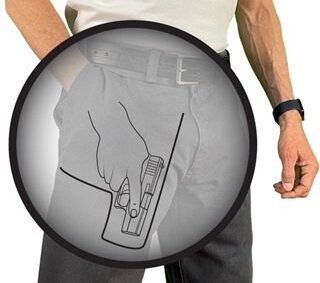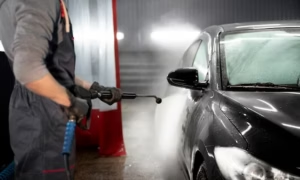Wearable technology often conjures images of smartwatches, fitness trackers, or augmented reality glasses. But there is another frontier where engineering innovation is quietly saving lives: concealed carry apparel. For more than 170 years, firearm carriers have faced the same frustrating problem: how to balance concealment, comfort, and speed. Traditional holsters forced a tradeoff: hide the firearm deeply but sacrifice access, or carry openly and risk exposure.
Now, one American company believes it has solved that problem by transforming ordinary clothing into advanced personal defense technology. CCW Breakaways, founded in 2007, is pioneering a new category of tactical wear that blends garment engineering, patented holster systems, and human-centered design to address a centuries-old challenge.
The Problem: A 170-Year Design Dilemma
The conventional holster has remained stubbornly unchanged in principle since the 19th century. Whether worn on the hip, inside the waistband, or strapped to the ankle, all holsters struggle with three competing demands:
- Concealability– keep the firearm invisible.
- Comfort– allow the wearer to move naturally throughout the day.
- Speed of Access– enable a draw in fractions of a second during emergencies.
No design has ever achieved all three. Deep concealment slows the draw; waistband holsters dig into the body and discourage all-day wear; quick-draw rigs usually print visibly through clothing. In an era when violent incidents can unfold in seconds, these limitations are more than inconveniences; they may cost lives.
Statistics underscore the problem. Despite tens of millions of Americans holding concealed carry permits, only about 2.4 percent carry a firearm consistently. The leading reason carriers cite for leaving their firearm at home? Discomfort. A holster that stabs into the waistline while driving or restricts bending at work is far more likely to stay on the nightstand than on the hip.
Rethinking the Solution: Apparel as Technology
CCW Breakaways approached the problem from a fresh angle. Instead of starting with the holster, founders Jay and Georgann French asked: What if the clothing itself became the holster?
This line of thinking gave rise to their patented holster-pocket system, which integrates firearm storage directly into pants and shorts. Rather than relying on an added holster, the garment becomes the platform for concealment and rapid access.
The innovation redefines concealed carry apparel as a form of wearable technology. It is not simply clothing that happens to cover a holster, but engineered apparel designed from the ground up to solve technical and tactical problems.
Inside the Breakthrough
At the heart of CCW Breakaways are several patented technologies that together eliminate the classic holster tradeoffs:
- Breakaway Pockets: Disguised openings look like ordinary pockets but are engineered to tear open under outward force. This eliminates what designers call the “monkey trap” problem, where the fist plus firearm circumference gets stuck in narrow openings.
- Pre-Staged Grip: Carriers can acquire a full grip on the firearm while it is still concealed, reducing the draw cycle by half. In high-stress scenarios, saving fractions of a second can be decisive.
- Hip-Line Storage: Firearms are stored below the hip-line-of-flexure, preventing waistband jabbing and allowing natural motion when sitting, bending, or running.
- SkinTight Holsters: Compression-fit inserts with trigger guard protection secure the firearm without bulk, ensuring retention and safety.
- Anti-Print Shields: Fabric barriers conceal the outline of the firearm, allowing carriers to blend seamlessly in social or professional environments.
Together, these features transform pants or shorts into an integrated system that enhances safety, mobility, and readiness.
Design Thinking Meets Tactical Engineering
The genius of CCW Breakaways is less about any single feature than about its design philosophy. By applying principles of human-centered design, a methodology often seen in consumer tech and ergonomics, the company built solutions around how people actually move, sit, and interact in daily life.
Instead of forcing carriers to adapt to a holster, the apparel adapts to the human body. This mirrors trends in wearable technology across other industries, where form must enhance function without disrupting daily routines. Just as fitness trackers succeed because they integrate seamlessly into life, concealed carry apparel must succeed by disappearing into everyday wardrobes while remaining fully functional.
From Tactical to Mainstream Wearables
What makes CCW Breakaways notable from a technology standpoint is its ability to serve multiple audiences. Law enforcement, private security, and military personnel have adopted the apparel for its tactical advantages. Yet civilians are equally drawn to its covert, everyday appearance. Business khakis, jeans, or cargo shorts equipped with holster-pockets allow professionals to carry without signaling intent or capability.
This dual usability positions CCW Breakaways within a broader movement in wearable technology: the blending of tactical-grade engineering with mainstream consumer design. It is no longer gear reserved for specialists but accessible tech for ordinary people navigating unpredictable environments.
Intellectual Property: Protecting Innovation
Another lens through which to view CCW Breakaways is intellectual property. The company holds six U.S. patents and two trademarks covering its holster-pocket systems and apparel designs. In an industry where copycat designs can dilute safety standards, patents ensure that innovations remain both protected and consistent.
Patents also signal the maturation of concealed carry apparel as a genuine technology sector. Just as patents drive competition and advancement in consumer electronics, they encourage innovation in personal defense wearables.
Future Horizons: The Next Generation of Concealed Carry
CCW Breakaways represents a turning point, but it may only be the beginning of how technology transforms concealed carry. Looking forward, several emerging possibilities could converge with apparel engineering:
- Smart Fabrics: Materials that sense pressure or body temperature could provide adaptive retention systems.
- Biometric Integration: Concealed carry clothing could integrate with firearms equipped with biometric locks, ensuring only the owner can draw and fire.
- AI and IoT: Concealed carry apparel could eventually connect with smart devices, alerting wearers to nearby threats or automatically logging incidents.
While these concepts remain speculative, they reflect the trajectory of wearable technology: toward greater integration, personalization, and intelligence.
When Design Saves Lives
From the outside, CCW Breakaways pants may look like any other pair of khakis or jeans. But hidden in the seams is a sophisticated engineering solution to a problem unsolved for generations. By merging apparel design with tactical functionality, the company has transformed concealed carry into a form of wearable technology, one that prioritizes speed, safety, and comfort without compromise.
In a world where unpredictability is the only constant, innovation matters. And sometimes, innovation is as simple and as profound as rethinking the pockets on your pants.



































